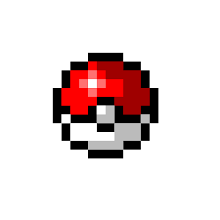"How can the distribution of species in specific environments better reflect their Pokedex entries?"

What I mean, is that certain Pokemon should only be found in environments that better reflect information within their dex entries, taking into account explicit references to certain behaviors, biomes, other Pokemon species, and conservation status. We also could account for real-world environments, and how some animals that Pokemon are based on live there - an example being saltwater marshes and dragonflies, and thus if a Pokemon game had this environment, we could expect to find wild Yanma.So, here were my ideas:Farfetch'd and Lapras would only be encountered in a game's Safari Zone, which in the game, would be a conservation area that uses its funds (i.e. the entry fee from the player) to help breed these endangered species. I'm not sure what other endangered Pokemon species there were but I'm almost entirely sure I've forgotten some.Overworld weather conditions could be weekly or on specific dates, rather than every day (such as rain on that one route in Alola), and certain Pokemon species would have different encounter rates reflecting this. For example, Paras and Parasect would be more common in forests on days that it's raining, as they are stated to have an affinity for damp places.Predator-prey relationships would be acknowledged, but not necessarily always via SOS battles if they are to be phased out in a future installment. For example, surfing on a freshwater lake/pond could have a rare chance (5% or less) of encountering a Pidgeotto or Pidgeot, which would be otherwise hunting for Magikarp. The predator would typically have a lower encounter rate than its prey, such as Mareanie vs. Corsola, Sableye & Gabite vs. Carbink, Lumineon vs. Staryu (I know it says Starmie), and others that I'm sure are mentioned in other dex entries.A lab could exist, that is meant to resemble the practice of "lab-grown" diamonds. This lab is where you can take a special (i.e. one-per-game, maybe with a "Fateful Encounter" flag?) Carbink in the postgame, and the lab will turn it into a Diancie, holding a Diancite. The nature will be copied from the Carbink, as well as the IVs (of which three will be perfect), so you can soft-reset for an ideal-natured Carbink.There's a lot of potential in marine environments. For example, not every type of marine environment could have Bruxish and Corsola & Mareanie - only tropical waters could, as we sort of see in Alola. Other species may be encountered in marine environments that are modeled on those at latitudes further away from the equator, though I'm not entirely sure which ones in particular. via /r/pokemon http://ift.tt/2sMEbu7
"How can the distribution of species in specific environments better reflect their Pokedex entries?"
!["How can the distribution of species in specific environments better reflect their Pokedex entries?"]() Reviewed by The Pokémonger
on
02:37
Rating:
Reviewed by The Pokémonger
on
02:37
Rating:


No comments